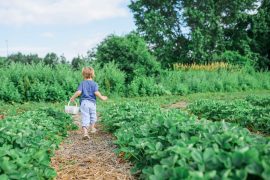Time samples
Time samples are used to keep track of your child’s behaviour, along with how many times the behaviour occurred throughout any given day.
Event samples
This simple observation helps in knowing your child’s behaviour, emotional needs, triggers, and interactions. Event samples are similar to time samples, but they go according to what happens when a behaviour occurs instead of in accordance with the time that the behaviour is happening.
Photographs
Photographs can record what your child is doing in an activity or how your child is behaving during a work day. Photos should also go with a good written description underneath them.
Work samples
These can be examples of your child’s art, drawing, and writing and are mainly used for art and writing during the first plane. They are more like records of creative progress.
What is the best way to identify your child’s needs?
Understanding your child’s needs is best done through close observation. You can identify your child’s needs from your child’s behaviour even before they can speak.
Observing your child daily, record keeping, and tracking your child’s interests and behaviour are the best ways to identify your child’s development needs.
Your child’s developmental behaviour or interest that you can attribute to a sensitive period should be prioritised. When behaviour occurs, that is likened to the needs of a sensitive period, and you can research or study activities related to that period through a Nino Mondo guide book or by analysing the information yourself online.
This helps identify an elimination system to work out the activities that most interest your child according to your child’s sensitive period.
Once this is done, you can use the concept of less is more to narrow the activities down to the ones that most interest your child and pack the rest into storage. So, to identify your child’s needs systematically, let’s go through simple examples and understand the steps:
Step 1: Is to identify your child’s behaviour during a sensitive period
For example, if your baby or toddler is grabbing objects and feeling them with their mouth and hands, your child may be in a sensitive period for tactile exploration.
Step 2: Now you can provide a range of activities that cater to this sensitive period
So, suppose your toddler is displaying the behaviour of tactile exploration. In that case, you can provide 3D solid shapes, tactile boards, sandpaper sounds, and numbers, a sensory bin that can be made DIY with natural materials, thermic bottles for your child’s gauge of temperature, etcetera.
Step 3: Identify which activities most interest your child for toy rotation
Once you have put out activities for your child’s sensitive period or behavioural needs, you can use observation and elimination to identify their interest.
Your child may find some activities too challenging or uninteresting because Montessori focuses on developing what your child is good at and still working on. Pack these activities away, and in doing so, you’re catering to your child’s developmental needs while practising the environmental value of less is more.
Your child’s needs will be best met when you consistently observe them, track and record your observations, and review them to conclude their behaviour. This is important for you to do as a Montessorian parent, along with the knowledge and resources to know or to research sensitive periods related to your child’s observed behaviour patterns.
Frequently Asked Questions
How are observations used to plan your child’s needs?
Observing children is a valuable tool for evaluating their advancement. It allows us to identify each child’s unique care and learning requirements. By doing so, we can strategically map out the following stages in their development and education. For practical insights, it’s crucial to observe children in a manner that benefits them and optimises our use of time.
How do you identify your child’s needs?
Observe behaviour, listen actively, and communicate openly. Understand emotions, address physical needs, and adapt as they grow for their overall support.
What are the 5 essential needs of children?
The essential elements for a strong start in a child’s life can be easily remembered – nutrition, health, education, play, and protection.
Originally published here.
Nino Mondo believes that the child is a guide for parents, and with the right tools and knowledge, parents can provide their children with the proper learning environment. Visit their website to know more. Connect with them on Instagram and Facebook.










